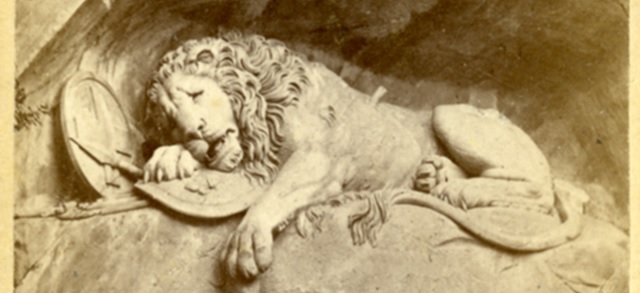
Monuments Class Projects
Architect/Sculptor of Monument
Baron Carlo Marochetti (1805-1867)
Preview

Medium
photograph, carte-de-viste
Keywords
Colin Campbell, Indian Mutiny, Crimean War, Baron Clyde, Britannia, Baron Carlo Marochetti
Physical Dimensions
4 x 2.5"
Date of Publication
2025
Date of Publication
c. 1867-1900
Name of Monument
First Baron Clyde Statue
Date of Creation of Monument
1867
Date of Completion or Dedication of Monument
1867
City of Monument
London
Location within City
Waterloo Place
State/Province of Monument
England
Country of Monument
United Kingdom
Description
Sir Colin Campbell, 1st Baron Clyde (1792-1863) was a famous general who fought in the Crimean War and was a commander during the Indian Mutiny. He stands atop a pillar watching over Waterloo Place in London. Below him, Britannia extends the olive branch of peace while resting on a British lion.
School of Art/Architecture
Neoclassical
Publisher
Unknown
Digital Date
Spring 4-22-2025
Copyright
Physical copy of the carte-de-visite is in the public domain. Digital copy scanned by Rod Library ©2025 Rod Library, University of Northern Iowa
Creative Commons License

This work is licensed under a Creative Commons Attribution-NonCommercial 4.0 International License



Comments
This carte de visite shows a monument called “Lord Clyde’s Statue” which commemorates Sir Colin Campbell, 1st Baron Clyde (1792-1863). Campbell was born in Glasgow on. His uncle, Colonel John Campbell, paid for his education, and also introduced Campbell to the Duke of York in 1807 as a candidate for a commission in the army. Campbell served in the army for many years. He had a distinguished military career, becoming the commander of the Highland Brigade in 1854 during the Crimean War (1853-1856).
During the Crimean War Campbell earned the rank of Major-General. He fought at the battle of the Alma, where he heroically led his brigade against a redoubt which had been retaken by the enemy and expelled the last Russian columns. The only reward he asked was for permission to wear the Highland bonnet instead of the cocked hat of a general officer.
This monument mostly commemorates Campbell's victories in India. In 1857, after the news of the Indian Mutiny arrived in Britain, Prime Minister Palmerston offered him the post of commander-in-chief. By the time he arrived in Calcutta in August, British forces had already recovered Delhi and Cawnpore and had begun preparations for the relief of Lucknow. The entire campaign lasted over a year, at the end of which India was again brought under British control.
In 1858, he was elevated to the peerage as Lord Clyde of Clydesdale, which explains the photo’s name, “Lord Clyde’s Statue”. By this time his health was failing and in 1860, he left India. Before his death, he was appointed colonel of the Coldstream Guards and in 1862 he was made a Field Marshal. In late 1860 he was presented with the Freedom of the City of London. Campbell died on August 14, 1863 and was buried in Westminster Abbey.
The statue by sculptor Baron Carlo Marochetti (1805-1867) was unveiled in 1867. Made of bronze, granite, and marble, it stands in Waterloo Place, London. Campbell is depicted standing tall, in a stance reminiscent of parade rest in the military. In his right hand he holds the strap of his bag, and his left holds his helmet. The figure shown below Campbell’s statue is Britannia, the female embodiment of Britain. Britannia is often depicted with a trident, shield, and helmet. In this depiction, she is seen seated on a lion with a sword beside her and an olive branch in her hand. The lion represents British power, strength, royalty, and protection. The act of Britannia seated on the lion can further imply dominion, leadership, or the triumph over adversity. An olive branch is a symbol of peace, and the sword at her side implies that she is done fighting. The monument is meant to commemorate Campbell’s victories in India leading the way to peace between Great Britain and its subjects in India.